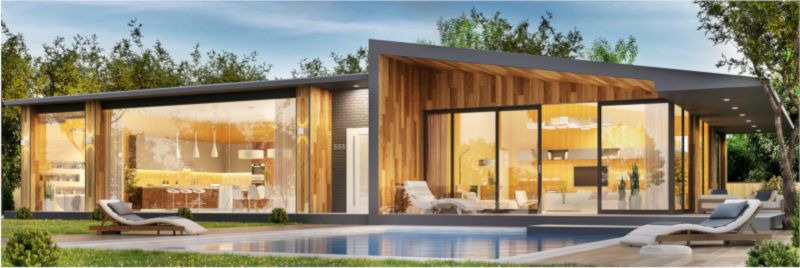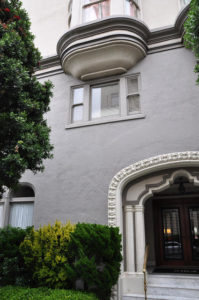If you’ve done any house-hunting in the Bay Area, you might have heard the terms Art Deco, Arts and Crafts Style, Bungalow, Modern, Contemporary, Mid-Century Modern, Cape Cod Style, Colonial and Victorian – to name a few of the architectural styles.
The problem is, some of these terms are used interchangeably, when they are distinct. We are fortunate in this area to have representations of all these styles. However, it helps if you know a little of the history of some of the most popular styles. Take Art Deco and the Arts and Crafts Style. They both refer to art, yet the similarities end there.
What’s Art Got to Do with It?
The Arts and Crafts era, popular in the mid-19th century, reflected the reverence for simplicity and craftsmanship, as a response to the ever increasing industrialized world. Craftsman homes showcase natural wood, nature motifs, tile and stained glass – all that the modern world was moving away from. William Morris’ work was representative of this style.
The 1920s and 1930s, a period of rapid change, inspired the sharp angles, zigzags and stepped designs we see in Art Deco. The new skyscrapers and scintillating jazz notes were definitely influences. The Golden Gate Bridge is done in the Art Deco style, as are a number of important buildings and landmarks built around the same time, like Coit Tower, the building housing the Twitter empire on Market between Ninth and Tenth streets, and numerous other examples, large and small.
The terms Bungalow and Craftsman are sometimes thought to be the same thing, but they are different. Arts and Crafts and Craftsman refer to, not only the architectural style but the interior style of the homes, as well. A bungalow is simply an actual form of house, and its origin is rooted in the mid-17th century, in India. Bungalow meant the homes owned by the British ruling class done in the Bengali style. Now, it means one-story homes that may mimic some elements of the craftsman style without containing all the architectural lines and themes.
Modern vs. Contemporary?
Modern and Contemporary are terms that realtors often use to describe homes. Modern is a specific architectural style of house. The “Modern” period was from the early 1900s to the 1950s. Frank Lloyd Wright was a pioneer of this style, and his work influenced those who came later. Examples of Wright’s work exist nationwide and one of his last projects was the Marin Civic Center, completed by his protégé Aaron Green after Wright’s death.
The homes Wright designed emphasized function. Ornate ornamentation, so popular earlier, was eschewed in favor a streamlined, minimalist form with clean, sharp lines. Some describe the style as cold, but the simplicity and large areas of floor-to-ceiling glass were meant to bring the homeowner closer to nature. That connection seemed to be getting lost in modern life, so the design emphasized the importance of it.
Contemporary is more closely aligned with the style of the moment because it is influenced and may mimic the styles that preceded it. Our technology- and data-driven world was in its infancy for the Modern movement and just as our technology has evolved, so have our design influences. The term “contemporary” may embrace elements of Modern design, but it is thought of as more fluid and influenced by the now.
Examples of Mid-Century Modern, thought to have been influenced in large part by Frank Lloyd Wright, abound and are reflected in entire neighborhoods in Marin, San Francisco and other Bay Area communities. The low-slung, often flat-roofed buildings with overhangs, large expanses of glass and open floor plans are a result of what came before in the designs of Wright and Mies van der Rohe. Both architects emphasized the need to connect with nature.
About 11,000 of these homes, dubbed California Modern, were built between 1949 and 1966 in nine subdivisions in Northern California by developer Joseph Leopold Eichler. He liked the designs of Wright and hired architect Aaron Green to design homes that stood out from traditional architecture. Eichler homes are still sought after today.
If you are curious about a potential home’s pedigree, or simply want to explore some of the Bay Area’s rich and varied architectural styles, the web is a great place to start. Before you launch any remodeling project, if you want to maintain the integrity of your home’s design structure, consulting an architect is a safe place to begin.
A version of this post first ran in 2021.




